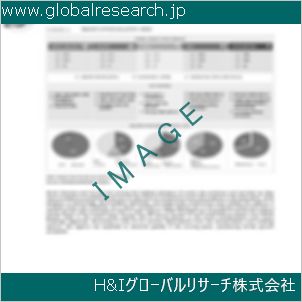Table of Contents
1 Industry Overview of Divinylbenzene
1.1 Definition and Specifications of Divinylbenzene
1.1.1 Definition of Divinylbenzene
1.1.2 Specifications of Divinylbenzene
1.2 Classification of Divinylbenzene
1.3 Applications of Divinylbenzene
1.3.1 Nuclear Application
1.3.2 Non-Nuclear Application
1.4 Industry Chain Structure of Divinylbenzene
1.5 Industry Overview and Major Regions Status of Divinylbenzene
1.5.1 Industry Overview of Divinylbenzene
1.5.2 Global Major Regions Status of Divinylbenzene
1.6 Industry Policy Analysis of Divinylbenzene
1.7 Industry News Analysis of Divinylbenzene
2 Manufacturing Cost Structure Analysis of Divinylbenzene
2.1 Raw Material Suppliers and Price Analysis of Divinylbenzene
2.2 Equipment Suppliers and Price Analysis of Divinylbenzene
2.3 Labor Cost Analysis of Divinylbenzene
2.4 Other Costs Analysis of Divinylbenzene
2.5 Manufacturing Cost Structure Analysis of Divinylbenzene
2.6 Manufacturing Process Analysis of Divinylbenzene
3 Technical Data and Manufacturing Plants Analysis of Divinylbenzene
3.1 Capacity and Commercial Production Date of Global Divinylbenzene Major Manufacturers in 2023
3.2 Manufacturing Plants Distribution of Global Divinylbenzene Major Manufacturers in 2023
3.3 R&D Status and Technology Source of Global Divinylbenzene Major Manufacturers in 2023
3.4 Raw Materials Sources Analysis of Global Divinylbenzene Major Manufacturers in 2023
4 Capacity, Production and Revenue Analysis of Divinylbenzene by Regions, Types and Manufacturers
4.1 Global Capacity, Production and Revenue of Divinylbenzene by Regions 2019-2024
4.2 Global and Major Regions Capacity, Production, Revenue and Growth Rate of Divinylbenzene 2019-2024
4.3 Global Capacity, Production and Revenue of Divinylbenzene by Types 2019-2024
4.4 Global Capacity, Production and Revenue of Divinylbenzene by Manufacturers 2019-2024
5 Price, Cost, Gross and Gross Margin Analysis of Divinylbenzene by Regions, Types and Manufacturers
5.1 Price, Cost, Gross and Gross Margin Analysis of Divinylbenzene by Regions 2019-2024
5.2 Price, Cost, Gross and Gross Margin Analysis of Divinylbenzene by Types 2019-2024
5.3 Price, Cost, Gross and Gross Margin Analysis of Divinylbenzene by Manufacturers 2019-2024
6 Consumption Volume, Consumption Value and Sale Price Analysis of Divinylbenzene by Regions, Types and Applications
6.1 Global Consumption Volume and Consumption Value of Divinylbenzene by Regions 2019-2024
6.2 Global and Major Regions Consumption Volume, Consumption Value and Growth Rate of Divinylbenzene 2019-2024
6.3 Global Consumption Volume and Consumption Value of Divinylbenzene by Types 2019-2024
6.4 Global Consumption Volume and Consumption Value of Divinylbenzene by Applications 2019-2024
6.5 Sale Price of Divinylbenzene by Regions 2019-2024
6.6 Sale Price of Divinylbenzene by Types 2019-2024
6.7 Sale Price of Divinylbenzene by Applications 2019-2024
6.8 Market Share Analysis of Divinylbenzene by Different Sale Price Levels
7 Supply, Import, Export and Consumption Analysis of Divinylbenzene
7.1 Supply, Consumption and Gap of Divinylbenzene 2019-2024
7.2 Global Capacity, Production, Price, Cost, Revenue, Supply, Import, Export and Consumption of Divinylbenzene 2019-2024
7.3 USA Capacity, Production, Price, Cost, Revenue, Supply, Import, Export and Consumption of Divinylbenzene 2019-2024
7.4 EU Capacity, Production, Price, Cost, Revenue, Supply, Import, Export and Consumption of Divinylbenzene 2019-2024
7.5 China Capacity, Production, Price, Cost, Revenue, Supply, Import, Export and Consumption of Divinylbenzene 2019-2024
7.6 Japan Capacity, Production, Price, Cost, Revenue, Supply, Import, Export and Consumption of Divinylbenzene 2019-2024
8 Major Manufacturers Analysis of Divinylbenzene
8.1 Manufacturer One
8.1.1 Company Profile
8.1.2 Product Picture and Specifications
8.1.2.1 Type I
8.1.2.2 Type II
8.1.2.3 Type III
8.1.3 Capacity, Production, Price, Cost, Gross and Revenue
8.1.4 Contact Information
8.2 Manufacturer Two
8.2.1 Company Profile
8.2.2 Product Picture and Specifications
8.2.2.1 Type I
8.2.2.2 Type II
8.2.2.3 Type III
8.2.3 Capacity, Production, Price, Cost, Gross and Revenue
8.2.4 Contact Information
8.3 Manufacturer Three
8.3.1 Company Profile
8.3.2 Product Picture and Specifications
8.3.2.1 Type I
8.3.2.2 Type II
8.3.2.3 Type III
8.3.3 Capacity, Production, Price, Cost, Gross and Revenue
8.3.4 Contact Information
8.4 Manufacturer Four
8.4.1 Company Profile
8.4.2 Product Picture and Specifications
8.4.2.1 Type I
8.4.2.2 Type II
8.4.2.3 Type III
8.4.3 Capacity, Production, Price, Cost, Gross and Revenue
8.4.4 Contact Information
8.5 Manufacturer Five
8.5.1 Company Profile
8.5.2 Product Picture and Specifications
8.5.2.1 Type I
8.5.2.2 Type II
8.5.2.3 Type III
8.5.3 Capacity, Production, Price, Cost, Gross and Revenue
8.5.4 Contact Information
…
9 Marketing Trader or Distributor Analysis of Divinylbenzene
9.1 Marketing Channels Status of Divinylbenzene
9.2 Traders or Distributors with Contact Information of Divinylbenzene by Regions
9.3 Ex-work Price, Channel Price and End Buyer Price Analysis of Divinylbenzene
9.4 Regional Import, Export and Trade Analysis of Divinylbenzene
10 Industry Chain Analysis of Divinylbenzene
10.1 Upstream Major Raw Materials Suppliers Analysis of Divinylbenzene
10.1.1 Major Raw Materials Suppliers with Contact Information Analysis of Divinylbenzene
10.1.2 Major Raw Materials Suppliers with Supply Volume Analysis of Divinylbenzene by Regions
10.2 Upstream Major Equipment Suppliers Analysis of Divinylbenzene
10.2.1 Major Equipment Suppliers with Contact Information Analysis of Divinylbenzene
10.2.2 Major Equipment Suppliers with Product Pictures Analysis of Divinylbenzene by Regions
10.3 Downstream Major Consumers Analysis of Divinylbenzene
10.3.1 Major Consumers with Contact Information Analysis of Divinylbenzene
10.3.2 Major Consumers with Consumption Volume Analysis of Divinylbenzene by Regions
10.4 Supply Chain Relationship Analysis of Divinylbenzene
11 Development Trend of Analysis of Divinylbenzene
11.1 Capacity, Production and Revenue Forecast of Divinylbenzene by Regions and Types
11.1.1 Global Capacity, Production and Revenue of Divinylbenzene by Regions 2024-2029
11.1.2 Global and Major Regions Capacity, Production, Revenue and Growth Rate of Divinylbenzene 2024-2029
11.1.3 Global Capacity, Production and Revenue of Divinylbenzene by Types 2024-2029
11.2 Consumption Volume and Consumption Value Forecast of Divinylbenzene by Regions, Types and Applications
11.2.1 Global Consumption Volume and Consumption Value of Divinylbenzene by Regions 2024-2029
11.2.2 Global and Major Regions Consumption Volume, Consumption Value and Growth Rate of Divinylbenzene 2024-2029
11.2.3 Global Consumption Volume and Consumption Value of Divinylbenzene by Types 2024-2029
11.2.4 Global Consumption Volume and Consumption Value of Divinylbenzene by Applications 2024-2029
11.3 Supply, Import, Export and Consumption Forecast of Divinylbenzene
11.3.1 Supply, Consumption and Gap of Divinylbenzene 2024-2029
11.3.2 Global Capacity, Production, Price, Cost, Revenue, Supply, Import, Export and Consumption of Divinylbenzene 2024-2029
11.3.3 USA Capacity, Production, Price, Cost, Revenue, Supply, Import, Export and Consumption of Divinylbenzene 2024-2029
11.3.4 EU Capacity, Production, Price, Cost, Revenue, Supply, Import, Export and Consumption of Divinylbenzene 2024-2029
11.3.5 China Capacity, Production, Price, Cost, Revenue, Supply, Import, Export and Consumption of Divinylbenzene 2024-2029
11.3.6 Japan Capacity, Production, Price, Cost, Revenue, Supply, Import, Export and Consumption of Divinylbenzene 2024-2029
12 New Project Investment Feasibility Analysis of Divinylbenzene
12.1 New Project SWOT Analysis of Divinylbenzene
12.2 New Project Investment Feasibility Analysis of Divinylbenzene
13 Conclusion of the Global Divinylbenzene (CAS 1321-74-0) Industry 2024 Market Research Report
| ※参考情報 ジビニルベンゼン(Divinylbenzene)は、化学式C₁₀H₁₴で表される芳香族化合物であり、CAS番号は1321-74-0です。この化合物は、一般的に二重結合を持つビニル基が2つ結合した構造を持ち、主にポリマーや樹脂の製造に利用されます。以下に、ジビニルベンゼンの定義、特徴、種類、用途、関連技術等について詳しく説明いたします。 ジビニルベンゼンは、主にストレートチェーンのビニル基が2つ結合しているため、不飽和の性質を持ち、化学反応において他の化合物との重合反応を容易に行います。このため、ジビニルベンゼンは多くの化学合成において重要な役割を果たしています。特に、ポリマー製造においては、重要なモノマーとして広く利用されています。 ジビニルベンゼンの物理的特性としては、無色の液体であり、特有の芳香を有しています。沸点は約190℃で、密度は約1.05 g/cm³です。また、この化合物は水には溶けにくいですが、有機溶媒には良く溶ける性質があります。これらの特性は、ジビニルベンゼンを利用した反応において様々な条件での使用を可能にしています。 ジビニルベンゼンには数種類の異性体が存在します。主な異性体は、オルトジビニルベンゼン、メタジビニルベンゼン、パラジビニルベンゼンです。これらの異性体は、分子内のビニル基の位置が異なるだけで、基本的な化学的性質は非常に似ています。しかし、それぞれの異性体には、異なる反応性や特性があるため、用途に応じて使い分けられることがあります。 ジビニルベンゼンの主な用途は、ポリマーの合成です。この化合物は、多くの合成樹脂や高性能プラスチックにおけるモノマーとして使用されることが多く、特にスチレン系ポリマーの製造において重要な役割を果たします。ジビニルベンゼンが重合反応を経て生成されるポリマーは、高い機械的強度や耐熱性を持つことから、様々な産業で利用されています。 また、ジビニルベンゼンは、クロマトグラフィーにおける固定相の製造にも使用されます。特に、カラムクロマトグラフィーでは、ジビニルベンゼンを利用したポリマーが高い選択性を持つため、分離分析において非常に重要な材料とされています。このように、ジビニルベンゼンを用いた特性の高いポリマーは、製薬、化粧品、食品など多岐にわたる分野で応用されており、研究開発が活発に行われています。 ジビニルベンゼンに関連する技術としては、重合技術や異性体選択技術が挙げられます。重合技術においては、ジビニルベンゼンを使用することによって目的の物性を有するポリマーを合成することが可能です。例えば、ジビニルベンゼンを利用したエラストマーの合成は、弾力性や耐摩耗性に優れる材料を得るための技術です。また、異性体選択技術により、求める性質を持つ異性体を選定することで、特定のアプリケーションに適した材料の開発が進められています。 今後、ジビニルベンゼンは新たな化学反応や材料開発においてますます重要な役割を担うことが期待されます。特に環境に配慮した材料や、耐熱性、耐薬品性に優れる新しいポリマーの開発において、ジビニルベンゼンを基にした技術が進化していくでしょう。また、持続可能なプロセスの中で、より効率的にジビニルベンゼンを生産し、高付加価値な製品に変換する技術の発展も期待されます。 ジビニルベンゼンは、化学工業において非常に価値のある化合物であり、その特性を生かした新しい応用が開発されることで、さらに多様な分野での活躍が見込まれています。このような背景から、ジビニルベンゼンは今後も化学分野における重要な鍵となる化合物であるといえるでしょう。 |
❖ 免責事項 ❖
http://www.globalresearch.jp/disclaimer












